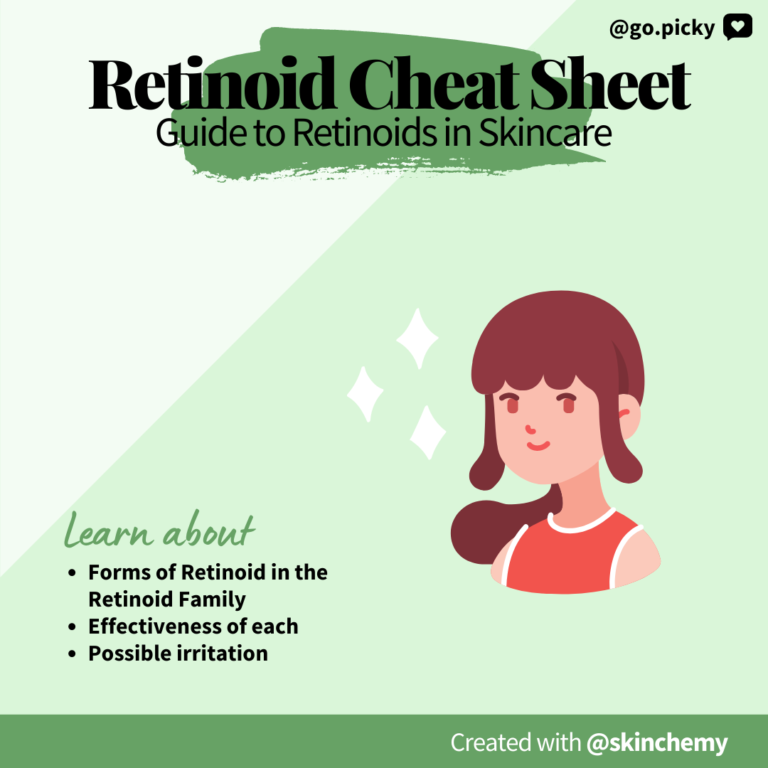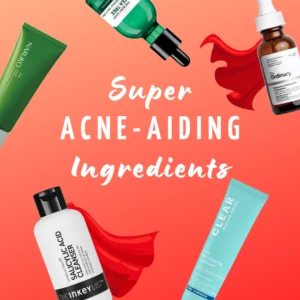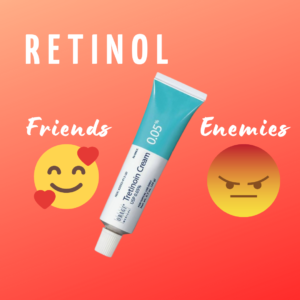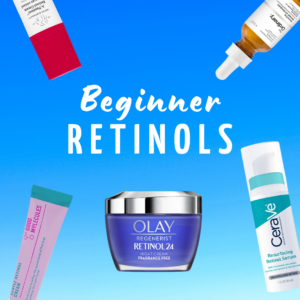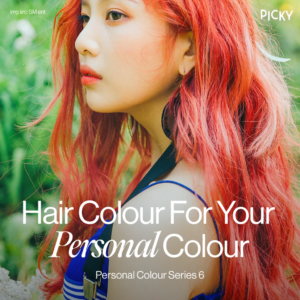When it comes to retinoids in skincare, it’s difficult to make a generalized statement about which one is the best type for you. That’s because everyone has unique skin conditions and skin types! Cosmetic chemist Lalita (@skinchemy on Instagram) shares her know-how with this easy retinoid cheat sheet. Ranging from the weakest to the strongest! Let’s dive in and learn more about retinoids:
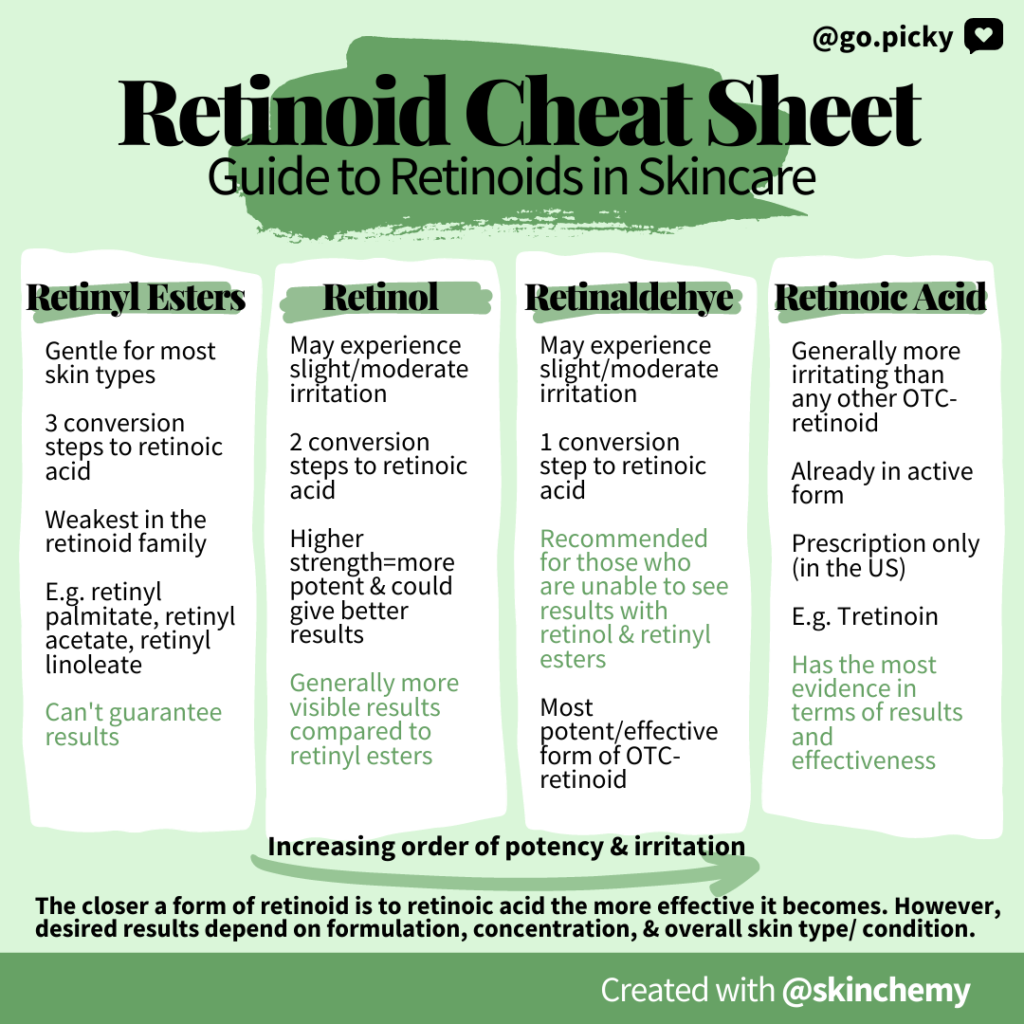
1. Retinyl Esters
Since retinyl esters are the weakest among the bunch, it’s much more gentle. It’s three conversion steps away from retinoic acid, the strongest retinoid type. Some examples include retinyl palmitate, retinyl acetate, and retinyl linoleate. However, as for effectiveness, it’s hard to guarantee results with retinyl esters.
2. Retinol
With retinol, you might experience slight or moderate irritation. Retinol is two conversion steps away from retinoic acid. Meaning that it’s stronger than retinyl esters. But with this added strength comes the possibility for better results!
3. Retinaldehye
You might experience moderate irritation with retinaldehye. Retinaldehye, being just one conversion step to retinoic acid, is the most potent and effective form of OTC-retinoid. In addition, if you don’t see the results you want with retinyl esters or retinol, it’s suggested to give retinadlehye a try.
4. Retinoic Acid
Being the most potent, retinoic acid is generally more irritating than any other OTC-retinoids. Retinoic acid is already in its active form. Meaning the strength level is high enough that a prescription is needed to use (in the US). A well-known example of retinoic acid is tretinoin. Great news is, retinoic acid has the most evidence in terms of results and effectiveness!
How It Works

OTC-retinoids have to be converted into retinoic acid by the enzymes in our skin before we can actually receive any of their amazing benefits. This can unfold in 1-3 steps. Ultimately, the closer the compound is to retinoic acid, the more readily it converts—therefore, the more effective it becomes. But remember that the conversion rate can also vary depending on the individual. Some people convert retinoids into retinoic acid more quickly than others. This is due to their skin type and different skin conditions!
One step: Retinaldehyde is the direct precursor to retinoic acid.
Two steps: Retinol first converts to retinaldehyde, and then from retinaldehyde into retinoic acid.
Three steps: Retinol esters convert to retinol, then from retinol to retinaldehyde, and finally from retinaldehyde to retinoic acid.
Found this retinoid cheat sheet helpful? Want to find retinoid products to start trying? Go to the Picky app now and see what products best for you! Don’t forget to also follow us on Instagram and go back to our blog for more skincare science content!

